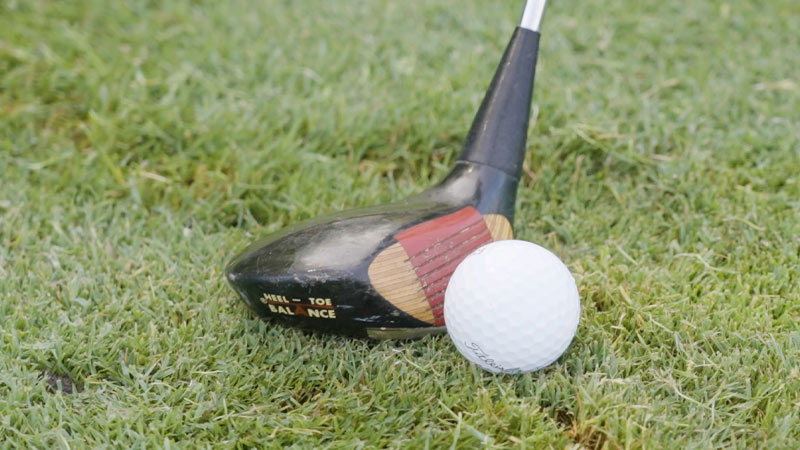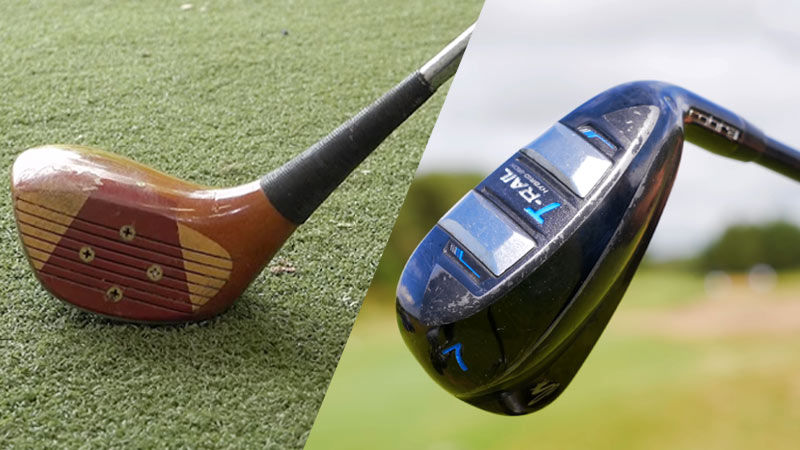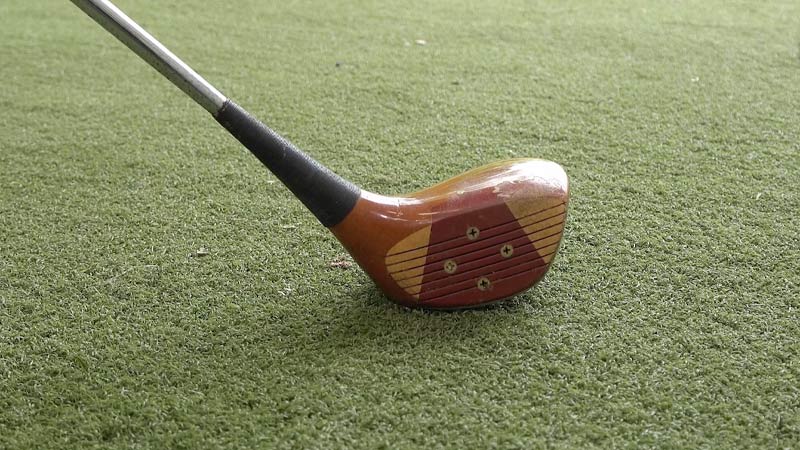Wooden golf clubs, relics of golf’s early days, hold a unique allure for enthusiasts and collectors alike.
Beyond their historical significance, these clubs evoke the craftsmanship and elegance of a bygone era in the sport.
With roots tracing back to the late 19th century, wooden clubs from renowned manufacturers or associated with legendary players carry a distinctive value.
Their scarcity, driven by the evolution of golf equipment materials, contributes to their worth.
As not just tools of the game but artifacts reflecting a rich heritage, the question of whether wooden golf clubs are worth anything is an exploration of their intrinsic historical, aesthetic, and collectible appeal.
Are Wooden Golf Clubs Worth Anything?
Yes, wooden golf clubs can indeed be worth something, and they hold value for several reasons. Wooden golf clubs hold a nostalgic charm and historical significance in the world of golf.
These classic clubs, often made from materials like persimmon wood, have a timeless appeal that attracts collectors and enthusiasts alike.
Here are the reasons why wooden golf clubs are valuable now:
Historical Significance
Wooden golf clubs trace their roots back to the origins of golf itself. Clubs from the late 19th and early 20th centuries, manufactured by companies like Spalding or Tom Stewart, are highly coveted.
Additionally, clubs associated with legendary players such as Bobby Jones can fetch significant prices.
The nostalgia attached to these clubs, representing a pivotal period in the evolution of golf equipment, contributes to their historical appeal.
Craftsmanship

The craftsmanship of wooden golf clubs is a testament to the artisanal skill prevalent in the early golf industry.
Craftsmen meticulously carved and shaped each club, often using hickory or persimmon wood.
The attention to detail in the design, hand-finishing, and the quality of the materials used showcase a level of craftsmanship that is difficult to replicate with modern manufacturing processes.
Limited Availability
The shift to metal and composite materials in the mid-20th century marked the end of an era for wooden golf clubs.
As a result, finding well-preserved examples of these clubs has become increasingly challenging.
The limited availability of authentic wooden clubs on the market enhances their desirability among collectors, driving up their value.
Aesthetic Appeal
Wooden golf clubs often boast elegant and timeless designs. The warm tones of the wood, combined with classic shapes and leather grips, contribute to their aesthetic appeal.
Displaying these clubs can evoke a sense of tradition and history, making them desirable for collectors who appreciate the visual allure of vintage golf equipment.
Condition and Rarity
The condition of a wooden golf club significantly influences its value. Clubs in pristine condition, with original grips and markings intact, are more sought after.
Rare variations or limited-edition models, especially those with unique features or markings, can command higher prices.
The rarity of certain clubs adds an element of exclusivity, making them more valuable to collectors.
Decorative and Display Value
Beyond their value as sporting artifacts, wooden golf clubs have a distinct decorative appeal.
Some collectors use these clubs to enhance the ambiance of golf-themed spaces, whether it’s a personal golf room or a display in a clubhouse.
The combination of historical significance and aesthetic charm makes wooden clubs sought after not just by golf enthusiasts but also by those looking to incorporate a touch of vintage elegance into their decor.
Wooden Golf Clubs vs Metal

The debate between wooden and metal golf clubs has been a longstanding one in the golfing community.
Each material brings its own set of characteristics and advantages to the game, appealing to different preferences and playing styles.
Below is a comparative table highlighting key aspects of wooden and metal golf clubs:
| Criteria | Wooden Golf Clubs | Metal Golf Clubs |
| Material | Typically crafted from hickory or persimmon | Usually made of steel, titanium, or graphite |
| Weight | Heavier | Lighter |
| Forgiveness | Less forgiving on mishits | More forgiving, providing better consistency |
| Distance Control | More control over shot shaping | Enhanced distance, especially with drivers |
| Technology and Innovation | Limited due to historical designs | Constantly evolving with advanced technology |
| Feel and Feedback | Offers a more traditional, tactile feel | Can lack the traditional feedback of wood |
| Durability | Prone to damage and wear over time | Generally more durable and resistant to wear |
| Cost | Vintage wooden clubs can be expensive | Generally more affordable, especially for new sets |
When Did They Stop Making Wooden Golf Clubs?
The transition from wooden to metal golf clubs occurred gradually over the course of the 20th century.
While wooden golf clubs were the standard in the early years of the sport, their use began to decline as advancements in materials and manufacturing processes took place.
The shift towards metal clubs, particularly those made from steel, gained momentum starting in the 1920s and 1930s. By the 1980s, wooden clubs had largely been replaced by metal counterparts.
The introduction of materials such as steel and later titanium, coupled with advancements in clubhead and shaft design, led to clubs that were more forgiving, durable, and capable of delivering improved performance.
Consequently, the production of new wooden golf clubs for mainstream use essentially ceased, marking a significant shift in golf club technology.
While wooden clubs are no longer produced for widespread use, they continue to hold value among collectors and enthusiasts interested in the history and craftsmanship of the sport.
Are Persimmon Woods Worth Anything?

Yes, persimmon woods can indeed be worth a significant amount, especially among collectors and enthusiasts who appreciate the historical and aesthetic value of these classic golf clubs.
Persimmon refers to a type of wood, specifically American persimmon or sometimes imported Asian persimmon, that was commonly used in the construction of wooden golf club heads.
The Persimmon golf club value depends on these factors:
Brand and Model
The brand and model of persimmon woods play a crucial role in determining their value.
Clubs from renowned manufacturers such as MacGregor, Titleist, or Wilson, and models associated with legendary players like Jack Nicklaus or Arnold Palmer, often have a higher market value.
Limited edition releases or clubs known for their innovative design may also be more sought after by collectors.
Condition
The condition of persimmon wood significantly affects its value. Clubs in pristine condition with well-maintained original grips, shafts, and clubfaces are more desirable.
Minimal signs of wear and tear, along with intact markings and logos, contribute to a higher valuation.
Restoration efforts, if done professionally and without compromising authenticity, can also positively impact value.
Age
Antique or vintage persimmon woods from earlier periods in golf’s history are generally more valuable.
Collectors often seek out clubs from the mid-20th century or earlier, appreciating the craftsmanship and design elements that characterize these older pieces. The age of the clubs can add to their historical significance and contribute to their appeal.
Craftsmanship
Persimmon Woods are known for their craftsmanship, and clubs with exceptional build quality, attention to detail, and unique features can command higher prices.
Handcrafted clubs, especially those made by skilled artisans or featuring innovative design elements for their time, are particularly valued by collectors who appreciate the artistry behind these classic golf clubs.
Rarity
Limited edition or rare persimmon woods are often more valuable due to their scarcity.
Clubs with unique characteristics, such as special edition releases or those featuring distinctive markings or finishes, can attract collectors looking for something out of the ordinary.
Rarity contributes to the exclusivity of these clubs, enhancing their desirability.
Historical Significance
Persimmon woods with a notable history can carry additional value.
Clubs associated with famous players, used in significant tournaments, or featuring unique stories become more than just sporting equipment—they become artifacts with historical significance.
The connection to key moments in the history of golf can elevate the value of these persimmon woods in the eyes of collectors.
When Did They Stop Using Wooden Golf Clubs?
The transition from wooden golf clubs to metal clubs occurred gradually over the course of the 20th century.
While wooden clubs were the standard in the early years of golf, advancements in materials and manufacturing processes led to the decline of wooden clubs in favor of more modern alternatives.
The use of wooden clubs started to diminish in the 1920s and 1930s when steel shafts and iron clubheads gained popularity.
This transition accelerated in the 1960s and 1970s with the introduction of metal woods, initially made of steel, and later evolving to include materials like titanium and graphite.
The shift to metal clubs was driven by their durability, forgiveness of mishits, and the ability to produce greater distances.
By the 1980s, the vast majority of golfers had made the switch to metal clubs, and wooden clubs had become largely obsolete for practical use in mainstream golf.
While wooden clubs are no longer used in professional or amateur play, they continue to hold a nostalgic and collector’s appeal, with some enthusiasts maintaining and occasionally playing with vintage sets for historical and sentimental reasons.
FAQS
Are wooden golf clubs still used in modern golf?
Wooden golf clubs are no longer standard in modern golf. The transition to metal clubs, starting in the mid-20th century, has made wooden clubs obsolete for mainstream play.
However, some enthusiasts and collectors still appreciate them for their historical and aesthetic value.
Do wooden golf clubs perform as well as modern clubs?
In terms of pure performance, modern clubs made from materials like steel, titanium, and graphite generally outperform wooden clubs.
Modern technology has significantly improved factors such as forgiveness, distance, and consistency.
Why would someone choose wooden golf clubs?
Golfers might choose wooden clubs for their historical significance, aesthetic appeal, and the unique shot-shaping capabilities they offer.
Are wooden golf clubs suitable for beginners?
Wooden golf clubs may present challenges for beginners due to their limited forgiveness and the need for precise shot control.
Beginners often find more success with modern clubs designed to be forgiving and user-friendly.
Are wooden golf clubs expensive?
Genuine antique wooden golf clubs, especially those with historical significance or associated with famous players, can be expensive due to their collector’s value.
To Recap
The worth of wooden golf clubs transcends their function on the course, encapsulating a rich tapestry of history, craftsmanship, and collector’s allure.
The transition from wood to metal marked a pivotal evolution in golf technology, rendering wooden clubs obsolete for mainstream play.
Yet, their value persists in the eyes of enthusiasts and collectors who appreciate the nostalgia, aesthetic charm, and intrinsic stories woven into each club.
Whether displayed as artifacts of a bygone era or wielded on special occasions, wooden golf clubs stand as more than sporting equipment—they embody the enduring legacy of a sport that has continually reinvented itself while honoring its roots.







